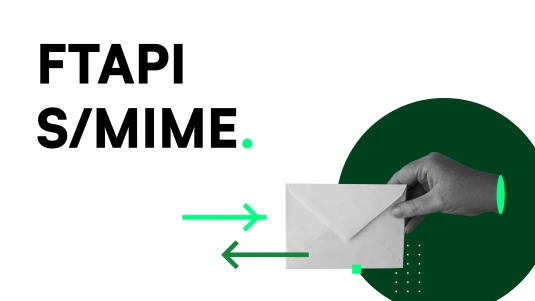Accessibility Improvement Act 2025: Who is affected – and what do businesses need to do now
The German Accessibility Improvement Act (BFSG) makes digital accessibility mandatory from 2025. Anyone offering digital products must now comply with the law and ensure accessibility.

As of 28 June 2025, the German Accessibility Improvement Act (BFSG) will come into force – a law that marks a fundamental shift for many businesses in how they handle digital products and services. What previously applied mainly to public institutions will now also become binding for private sector operators: digital accessibility is becoming a legal requirement.
In this article, we explain who is affected by the BFSG, what changes compared to previous regulations, and how businesses can take a strategic approach to implementation.
What is changing under the Accessibility Improvement Act 2025?
With the introduction of the BFSG, digital accessibility will become a binding legal requirement for private sector businesses for the first time. The law obliges companies to design their digital products and services in a way that makes them accessible to all people – regardless of physical or cognitive impairments.
What previously applied only to the public sector will now also become mandatory for many private enterprises. From mid-2025 onwards, they will be required to meet legal standards for accessible websites and web applications. This means:
Digital services must be designed to be accessible – from websites to self-service terminals.
Not just individual elements like forms are affected, but entire user journeys – including payment systems and communication channels.
Who is affected by the BFSG 2025 – and who is not?
In principle, the law applies to all businesses that offer digital products or services to consumers. The industry itself is irrelevant – what matters is whether the service is digitally accessible to users.
The following sectors are particularly affected:
E-commerce: Operators of online shops, sales platforms and booking systems
Financial services: Banks and insurance providers offering digital banking services
Telecommunications and transport: e.g. travel apps, ticket machines, check-in terminals and ticket portals
Manufacturers of digital devices: Producers of e-books, tablets, notebooks and e-readers
Software companies: Providers of self-service tools, customer portals or secure digital communication solutions
Businesses are not affected if they operate purely internal systems or provide B2B-only services with no direct consumer access.
Small businesses are partially exempt
Small businesses that provide services are generally not subject to the law.
According to the definition in § 2 (1) no. 1 of the German Accessibility Improvement Act (BFSG), a small business is any company that:
employs fewer than 10 people and
has an annual turnover or balance sheet total of no more than 2 million euros
Important: If a small business offers products (e.g. self-service terminals) or consumer-facing digital services (e.g. tools for online appointment booking) that are explicitly covered by the BFSG, they must still meet the legal requirements – regardless of company size.
Practical examples
An IT company with 12 employees that sells software to private customers via a customer portal is affected. It exceeds the size threshold and offers a digital product.
An e-learning provider with 6 employees that sells online courses directly to pupils or parents is affected. Digital education services are covered by the law – regardless of company size.
An insurance agency with 9 employees that offers customers an online portal for managing contracts and submitting claims is affected. This counts as a digital service, even for small companies.
A manufacturing business with 40 employees that only supplies industrial components to business clients and does not operate a website with consumer functions is not affected. There are no relevant products or digital services aimed at consumers in this case.

Which websites must be accessible from 2025 onwards?
From 28 June 2025, all websites aimed at end users must be accessible. This includes online shops, booking pages, customer portals, and service websites with features such as live chat. The key question is: can customers access the service digitally?
Mobile apps, web applications and embedded features such as payment pages or login areas are also covered. Businesses should therefore now review which of their digital offerings fall under the law – and where barriers still exist.
What exactly does the BFSG require in practice?
The requirements of the German Accessibility Improvement Act are based on two established standards: the Web Content Accessibility Guidelines (WCAG 2.1) and the European standard EN 301 549. These frameworks define how digital content must be designed, structured and presented to ensure it can be used by people with various disabilities.
This includes, for example:
Alternative text for images and graphics
Accessible forms with clear labels
Operation without a mouse (e.g. via keyboard or screen reader)
Sufficient colour contrast and readable font sizes
Clear language and intuitive navigation
Accessible PDFs and embedded media content
Certified accessibility with FTAPI
Solutions like FTAPI SecuMails and SubmitBox demonstrate how secure and accessible digital communication can work in practice.
What are the consequences of non-compliance with the BFSG?
Companies that do not comply with the German Accessibility Improvement Act (BFSG) risk fines of up to €100,000, product bans, or legal warnings. Competitors and consumer protection organisations may also take legal action. In addition, non-compliance can damage a company’s reputation and harm sales.
Lack of accessibility is increasingly seen as exclusionary – and is often publicly criticised. Many public tenders already require accessible solutions. Companies that are not compliant risk losing contracts, customers and trust.
Implementation in four steps: How businesses should proceed
As of 28 June 2025, the German Accessibility Improvement Act is legally binding – the starting signal has been given. Companies that have not yet made their digital products and services accessible must act now, even though a transition period until 28 June 2030 applies to existing offerings. Implementation is often technically and organisationally demanding – especially if accessibility has not yet been considered.
Accessibility is more than just a design requirement.
Products and services are only truly accessible if they are:
usable by people with disabilities
in the same way as by everyone else
without undue difficulty
and without requiring outside help
They must be findable, accessible and usable.
Accessibility also means that information can be perceived through at least two senses (e.g. visually and auditorily) – such as through text and sound, or via screen display and keyboard operation.
The specific requirements are defined in the implementing regulation of the BFSG.
Tip: When implementing accessibility, companies should also keep cybersecurity in mind. The two go hand in hand: only digital solutions that are both secure and accessible build trust – and meet legal standards.
Here’s how to proceed, step by step:
Step 1: Take stock
Which of your products and services are affected?
Do your websites, online shops, portals, apps or e-books already meet accessibility requirements?
How do you communicate with customers – via forms, chat functions or email?
Step 2: Identify gaps
Technical barriers on your website (e.g. missing alternative text, inaccessible forms)
Structural issues (e.g. lack of keyboard navigation)
Missing elements such as plain language or accessible PDF documents
Step 3: Begin implementation
Prioritise your channels: start with high-traffic areas such as e-commerce, customer portals or login and communication functions
Collaborate with UX/UI designers, accessibility consultants and developers
Involve affected user groups – for example, through usability testing with people with disabilities
Step 4: Document and provide evidence
The law requires not only implementation, but also traceable documentation of all accessibility measures.
Companies must be able to demonstrate, upon request, how they have made their products and services accessible.

Note: Accessibility doesn’t end with your website. Digital communication – such as email portals, upload workflows or automated service processes – must also meet the requirements of the German Accessibility Improvement Act. Solutions like FTAPI SecuMails and SubmitBox are already certified as accessible. More on that in the next section.
Don’t forget digital communication: FTAPI SecuMails as a certified accessible solution
One aspect that is often overlooked: Digital communication channels, through which companies interact with customers, are also covered by the BFSG. This includes, for example:
Contact forms and customer portals
Encrypted email communication
Upload and download functions
Automated service processes
FTAPI places strong emphasis on accessibility. Product development is fully aligned with the requirements of the BFSG – both technically and in terms of user experience.
A concrete example: The FTAPI products SecuMails (for secure, encrypted email) and SubmitBox (for digital document submission) are certified accessible. An independent audit confirmed 92 percent accessibility.
This means that even people with disabilities can receive, read and reply to messages – without encountering technical barriers.
You can find more details in our accessibility statement (German).
If you have any questions about digital accessibility, feel free to send us an email.
Conclusion: Implement accessibility – secure your digital future
The German Accessibility Improvement Act 2025 marks a turning point in digital regulation:
What was once voluntary is now legally required – and becoming the new standard in digital competition. Implementing accessibility takes time and resources. But it’s no longer optional – it’s mandatory, and often a clear competitive advantage.
One thing is clear: Accessibility – like cybersecurity and secure data exchange – is not the responsibility of individual teams alone. It affects the entire organisation: IT, marketing, product development, sales and customer service. Only when everyone is involved can accessibility be implemented effectively.
Accessibility is not an add-on – it is a prerequisite for digital resilience and long-term success.
FAQ – Frequently asked questions about the BFSG
When does the German Accessibility Improvement Act come into effect?
The law has been in force since 28 June 2025. From that date, new digital products and services may only be offered if they are accessible. Existing offerings have a transition period until 28 June 2030. A longer transition until 2040 applies only to self-service terminals already in operation, such as ticket machines.
Is digital accessibility mandatory for companies from June 2025?
Yes. For nearly all businesses offering digital products or services, accessibility has been legally required since June 2025. Relying on voluntary standards is no longer enough.
Non-compliance can result in fines of up to €100,000, legal warnings or even bans on distribution.
There may also be disadvantages when bidding for public contracts or applying for funding – companies that fail to meet accessibility requirements are often excluded. Those who act in time gain a clear advantage – legally, financially and in terms of reputation.







